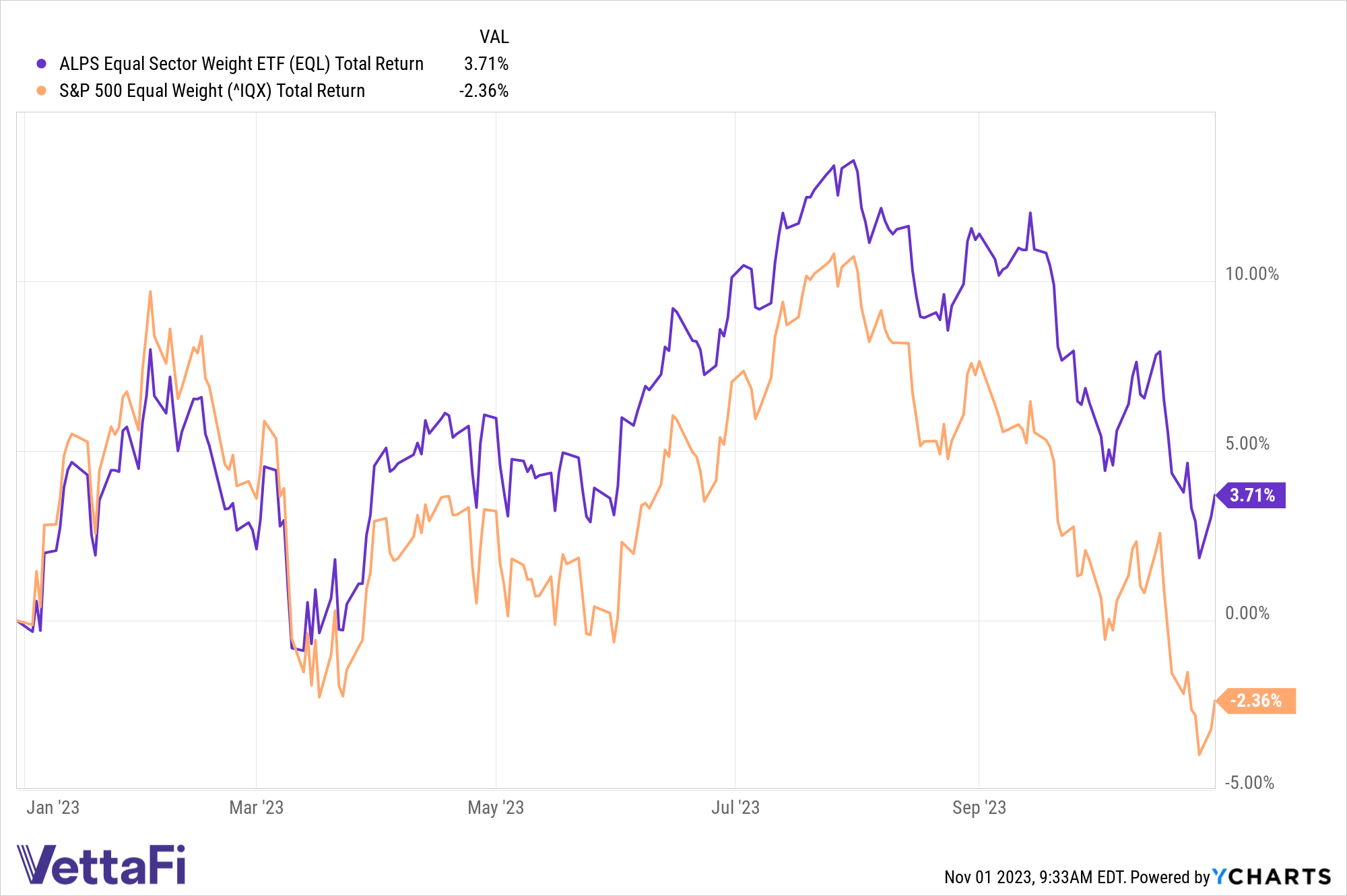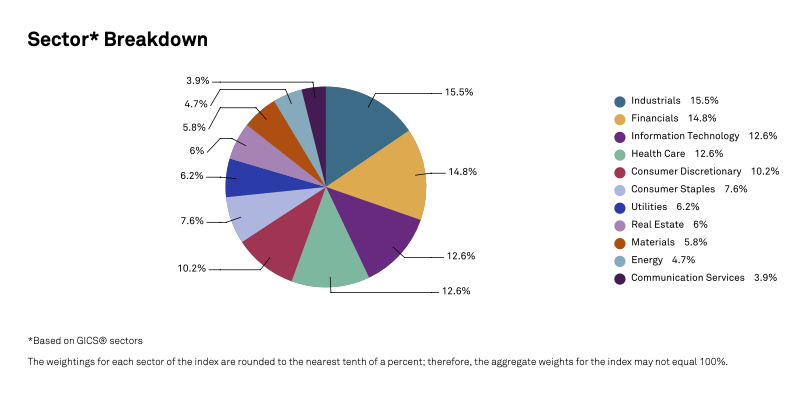Equal weighting at the sector level has provided compelling returns and diversification benefits for investors.
Strategies that provide equal exposure to every security in a benchmark have garnered significant investor interest in recent years. The largest equal weight ETF, the Invesco S&P 500 Equal Weight ETF (RSP), has accreted $8 billion in net flows year to date.
Equal weighting individual stocks is a popular strategy. However, equal weighting at the sector level has historically provided better returns, making it worthy of consideration.
“While many advisors understand the virtues of equal weighting, they focus on the stock and not the sector level,” said Todd Rosenbluth, head of research at VettaFi. “Taking a top-down diversification approach ensures you have meaningful exposure to not just a handful of sectors.”
The ALPS Equal Sector Weight ETF (EQL) is up 3.7% year to date through the end of October. During the same period, the S&P 500 Equal Weight fell 2.4%. Over a three-year period, EQL has gained 37.9%, while the equal weight benchmark has climbed 33.6%.

EQL uses a fund-of-funds ETF structure, investing equal proportions in 11 Select Sector SPDRs. The fund delivers moderate, yet meaningful exposure to every sector of the market.
Conversely, the S&P 500 Equal Weight includes all securities in the S&P 500, giving every security an equal weight at each quarterly rebalance.
Equal Weighting Individual Securities and Sector Exposures
While equal weighting at the individual security level provides balanced exposure at the stock level, it creates uneven sector exposures. In the S&P 500 Equal Weight, 15.5% of the index by weight is in the industrials sector. On the opposite end, just 3.9% of the index by weight is in communication services stocks.

Source: S&P Global as of October 31, 2023
This weighting approach has led to the index’s underperformance year to date, as the communication services has been the largest driver of positive returns in 2023. Conversely, the overweight exposure to industrials and financials has been a performance detractor.
For more news, information, and analysis, visit the ETF Building Blocks Channel.








